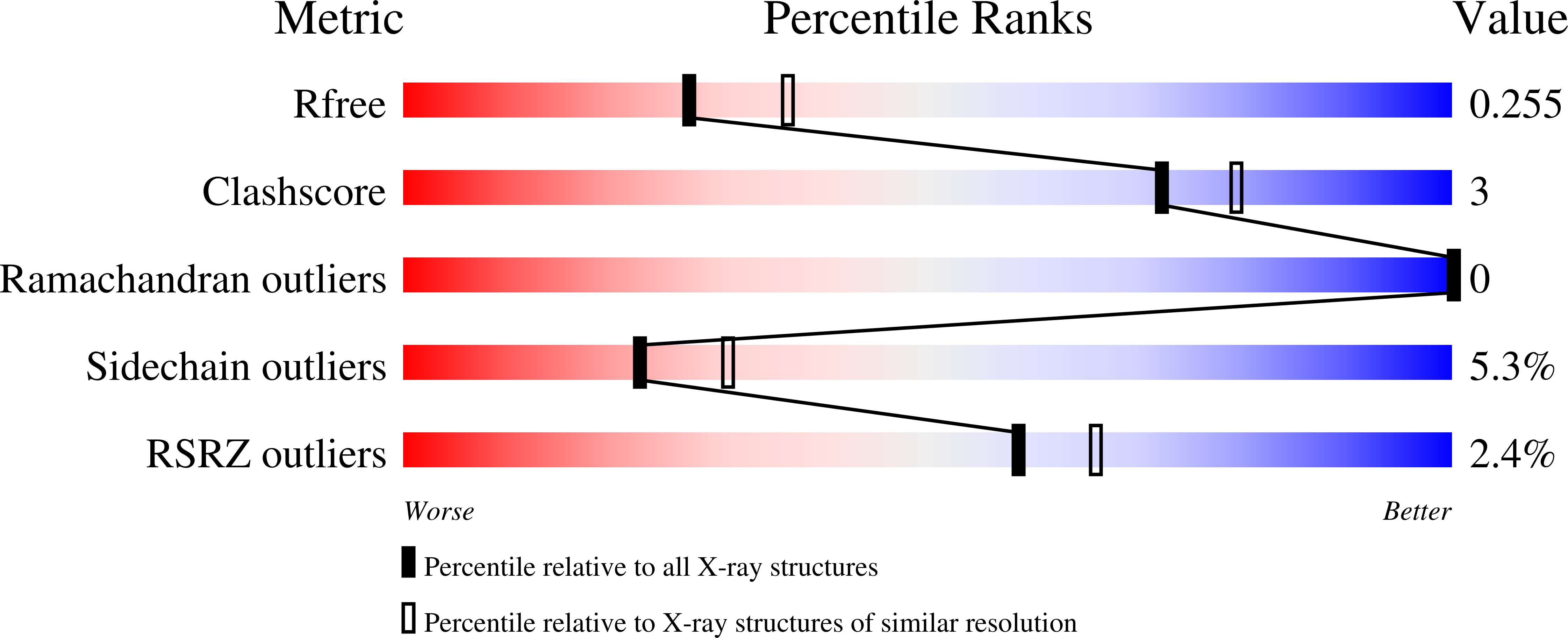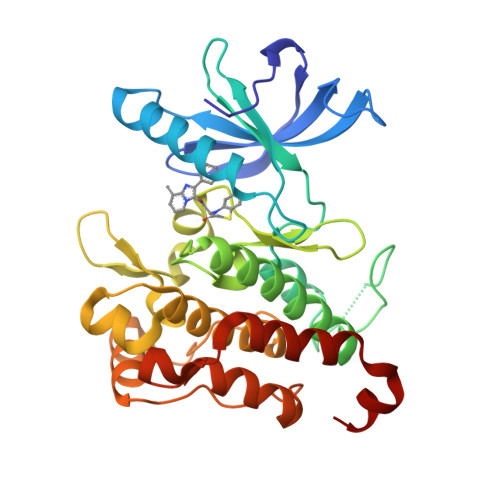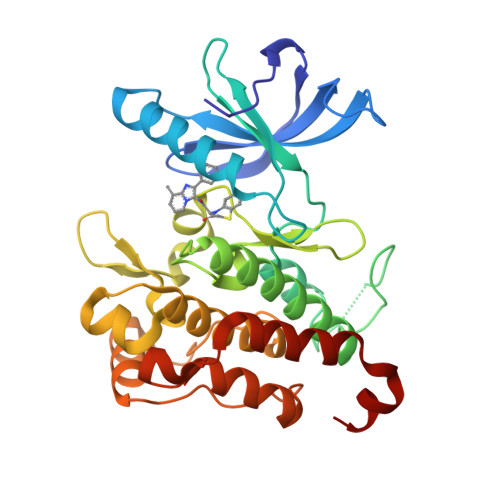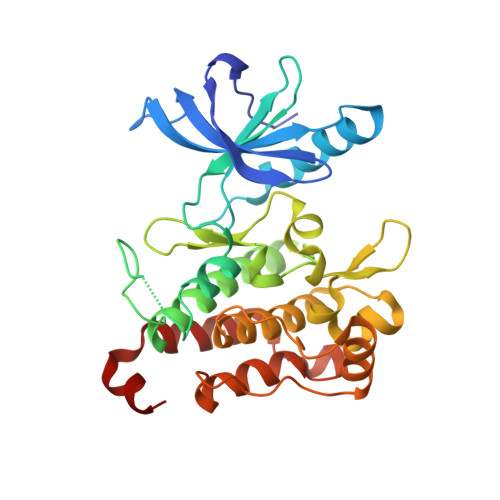Deciphering the Allosteric Binding Mechanism of the Human Tropomyosin Receptor Kinase A ( hTrkA) Inhibitors.
Subramanian, G., Johnson, P.D., Zachary, T., Roush, N., Zhu, Y., Bowen, S.J., Janssen, A., Duclos, B.A., Williams, T., Javens, C., Shalaly, N.D., Molina, D.M., Wittwer, A.J., Hirsch, J.L.(2019) ACS Chem Biol 14: 1205-1216
- PubMed: 31059222
- DOI: https://doi.org/10.1021/acschembio.9b00126
- Primary Citation of Related Structures:
6NPT, 6NSP, 6NSS - PubMed Abstract:
Access to cryptic binding pockets or allosteric sites on a kinase that present themselves when the enzyme is in a specific conformational state offers a paradigm shift in designing the next generation small molecule kinase inhibitors. The current work showcases an extensive and exhaustive array of in vitro biochemical and biophysical tools and techniques deployed along with structural biology efforts of inhibitor-bound kinase complexes to characterize and confirm the cryptic allosteric binding pocket and docking mode of the small molecule actives identified for hTrkA. Specifically, assays were designed and implemented to lock the kinase in a predominantly active or inactive conformation and the effect of the kinase inhibitor probed to understand the hTrkA binding and hTrkB selectivity. The current outcome suggests that inhibitors with a fast association rate take advantage of the inactive protein conformation and lock the kinase state by also exhibiting a slow off-rate. This in turn shifts the inactive/active state protein conformational equilibrium cycle, affecting the subsequent downstream signaling.
Organizational Affiliation:
Veterinary Medicine Research & Development (VMRD) , Zoetis, 333 Portage Street , Kalamazoo , Michigan 49007 , United States.

















